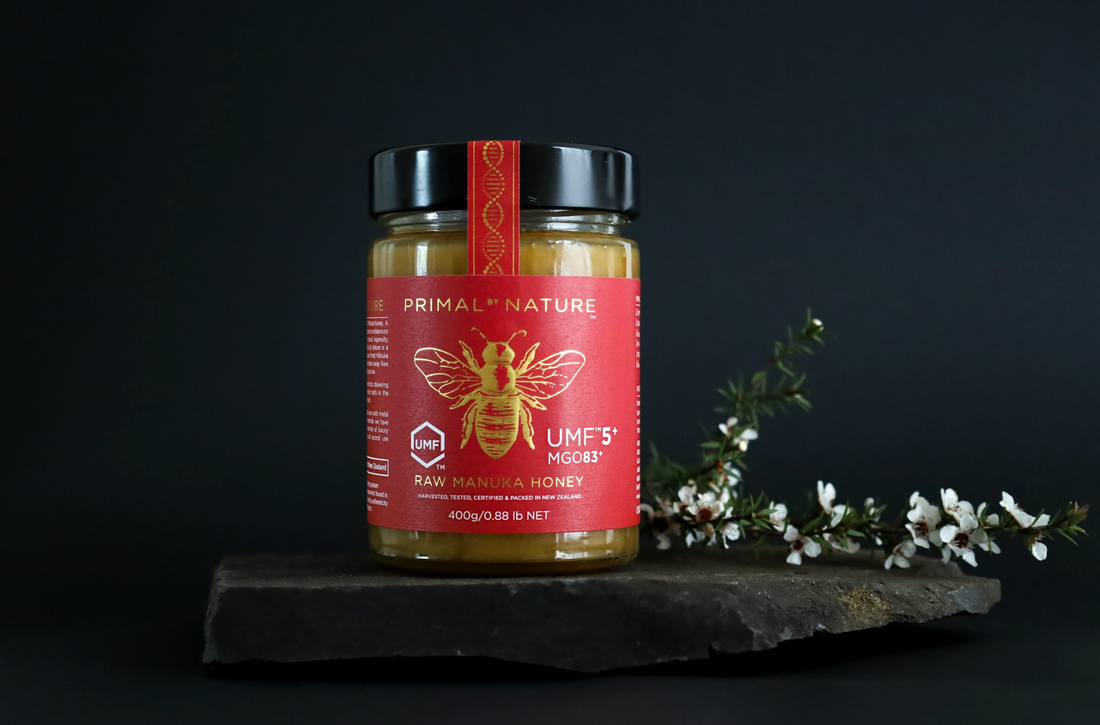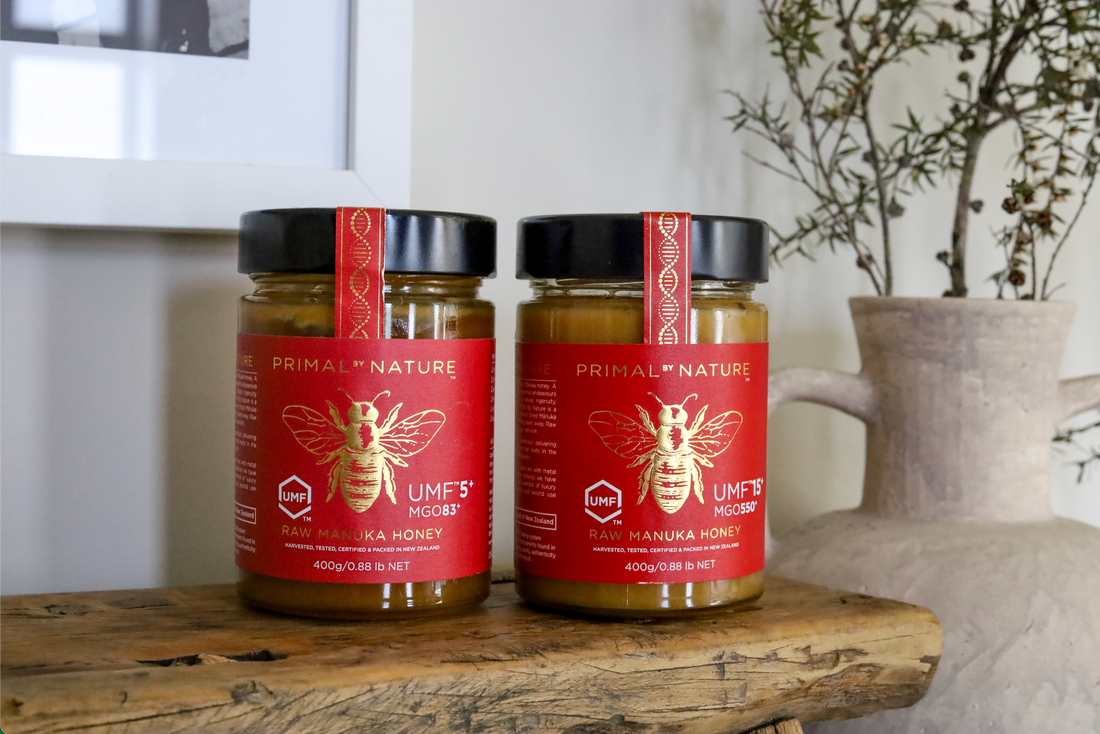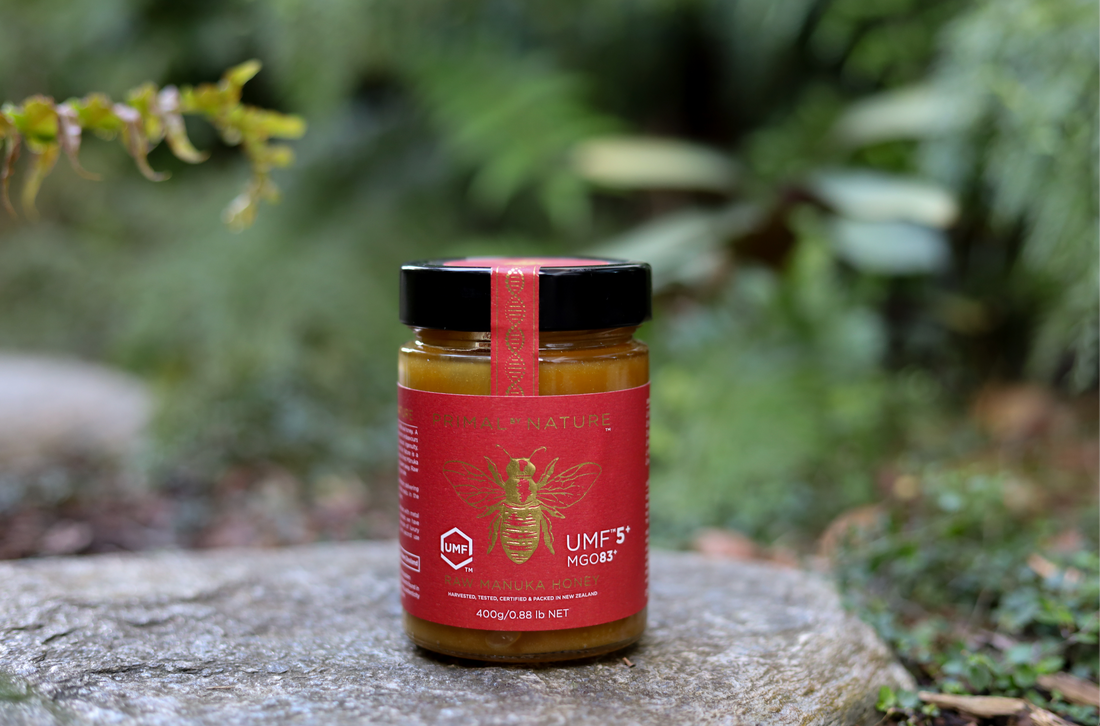Mānuka honey is extensively known worldwide as one of the rarest honey varieties on Earth, but what exactly makes Mānuka honey a step above the others? The rarity? Perhaps, but bioactive ingredients within are not found in other conventional honey at these concentrations.
One bioactive ingredient, in particular, is methylglyoxal or MGO. This organic compound is unique and may contribute to several unique properties within Mānuka honey. This blog will outline what MGO is and why this chemical has many scientists worldwide eager to discover more.
The History of MGO
MGO was first discovered in 1981 by the New Zealand biochemist Peter Molan. Known for his scientific work with Mānuka honey, Dr Molan began a series of experiments to determine why this primal and raw gift from nature was unique.
Although there is MGO present in trace amounts within other honey, the concentration within Mānuka honey has been suggested to be far more significant. Molan’s research had begun discussions regarding the non-peroxide antibacterial activity of Mānuka honey. MGO has become such an integral ingredient for Mānuka honey that most established brands will feature the concentration on the front of their jars.
However, while MGO has been speculated to have several benefits when used, it’s important to remember that any scientific claim has been made in an artificial environment. This is all exciting news and results, but we cannot apply these claims to real-world applications until further results are found.
Ensure the Mānuka honey you buy has been made, packaged, harvested and produced in New Zealand. This will certify that your Mānuka honey has gone through the stringent requirements as set by the New Zealand Government.
What Makes MGO So Popular?
Since Molan’s discovery, Mānuka honey slowly grew into one of the most popular honey varieties worldwide. Especially in the current age of sustainable and eco-friendly products, many worldwide seek natural alternatives to artificial sweeteners and items.
Several reports indicate that MGO may be linked to antibacterial properties; however, further research is still required. Nevertheless, Mānuka honey has seen a rise in the presence of industries such as skincare and natural medicine.
Mānuka honey lozenges have become popular as they have been known to soothe sore throats. Additionally, DIY facial masks are commonly used due to the humectant properties of honey that can add a layer of moisture to the skin.
Is MGO Related To UMF?
UMF, or the Unique Mānuka Factor, is a grading system for Mānuka honey. Due to its stringent requirements that ask for many criteria to be met, it’s commonly considered the gold standard of Mānuka honey grading.
UMF will award a number to each passed Mānuka honey jar to certify the potency and authenticity. This number will be between UMF 5+ and UMF 32+. UMF considers four unique features of the honey when certifying the UMF grade.
- MGO
- Dihydroxyacetone (DHA) - the biochemical precursor to MGO
- Leptosperin - DNA marker for Mānuka honey
- Hydroxymethylfurfural (HMF) - biochemical indicating heat damage
How Do You Know If MGO Is Genuine?
Many natural and raw Mānuka honey fans will be on the lookout for the most untouched and primal product. Those seeking unadulterated and straight-from-the-source honey will want to verify that they are buying the real deal. Similar to the information above, some markers indicate the product's authenticity.
Leptosperin, the unique chemical only found in Mānuka flowers, is one of the key ingredients that can indicate genuine Mānuka honey. This chemical is needed to both identify Mānuka honey and to receive a UMF stamp of approval. Secondly, the presence of DHA (chemical precursor of MGO) indicates to buyers that the MGO within is genuine and from a natural source.
Primal by Nature - Sustainably Providing 100% Pure New Zealand Mānuka Honey
Primal by Nature is able to deliver Mānuka honey that comes from raw and primal regions in some of the most remote New Zealand locations. We are your one-stop-shop for a sustainable and natural solution. Our Mānuka honey comes in a range of UMF™ strengths.
All Primal by Nature Mānuka honey arrives at your door in recyclable glass jars regardless of the level of MGO or UMF™. We believe that our pure New Zealand Mānuka honey must be the best and should be available to consumers in the same eco-friendly packaging.
Primal by Nature eliminates the confusion surrounding Mānuka honey UMF™ grading systems and standards. As a result, you will be made aware of the different grades and be confident in buying a product that reflects an environmentally conscious brand.
Taking Mānuka honey to the next level, every glass jar of Primal by Nature contains a potent primal burst of nature. To taste Mānuka honey of this stature is to embrace nature itself. So take a look at our extensive selection of Mānuka honey products and become one with nature.





